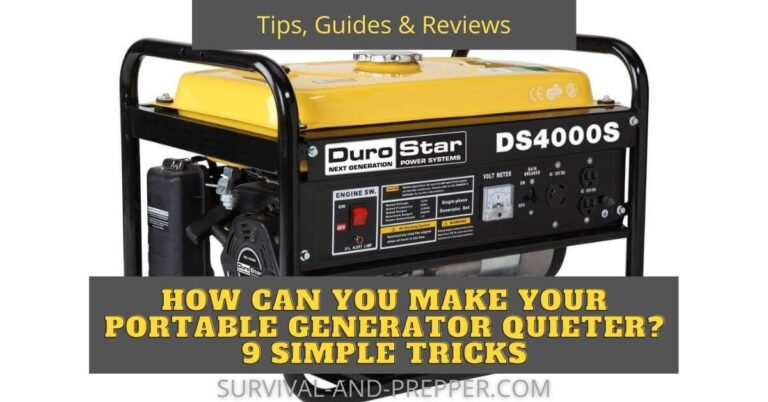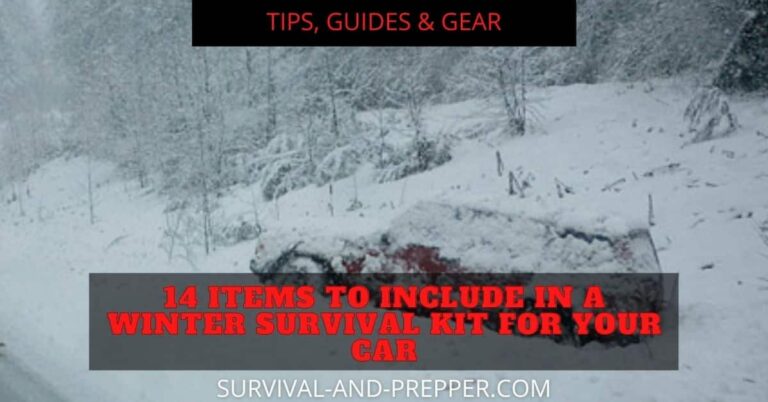5 of the Best Indoor Kerosene Heaters [Plus My Pick For Number 1]
When considering alternative heating sources, one that comes to mind almost immediately for me is the Kerosene Heater.
In some older homes where central heating and air are not available or there is no easy access to fuels such as propane and natural gas a kerosene heater could be one of the few viable options.
Kerosene heaters are great options as a backup heating source since they are completely self contained units. Often containing the fuel tanks, heat producing mechanism, ignition source and safety features all in one semi compact package.
With that in mind let’s dive into our pick for the best indoor kerosene heater. This will be followed by some additional options and a buyers guide so that you can see for yourself why we chose this particular heater.
My Number 1 Pick for the Best Indoor Kerosene Heater
#1 Pick – Dyno-Glo 23,800 BTU Convection Heater
This Dyno-Glo is made by the well respected GHP Group who have been making fireplaces, grills and heaters among other things since 2003.
Featuring a high output 23,800 BTU burner and 360 degree heat output this heater is capable of quickly bringing even a larger room up to a comfortable temperature.
The Dyno-Glo features simple 1 button push ignition and shut off and an all in one design featuring the fuel tank, heat shields and ignitor in one relatively compact unit.
Drawbacks
The main draw backs I had with this heater, is really with all kerosene heaters in general. That is that you really should be fueling them outside to minimize the dangers of an accidental spill. The fill cap and spout is a little tight on this design and you want to make sure to use a funnel to minimize those spills.
Overall
The Dyno-Glo is an excellent kerosene heater over all and is more than capable of heating a 1000 square foot area with a single unit. Coming in at a reasonable price this heater makes a great primary heating source in an off grid situation or as a back up heat source in case of a power outage or other similar incident that disrupts your normal heat source.
The Best Kerosene Heater for a Garage
Dura Heat Forced Air 135K BTU
Forced air heater work by igniting a liquid or gaseous fuel and then using an electric blower to provide heat output and additional oxygen to the flame.
Forced air heaters tend to put out far more heat than their ambient air counter parts.
This particular model does not let you down in this area. Producing up to 135,000 BTU it is capable of putting out nearly 5 times the heat produced by our number one indoor pick.
It is important to note that forced air heaters are not safe to use inside of completely enclosed spaces in most circumstances. They consume far too much oxygen and give up carbon monoxide.
Forced air heaters are intended to heat far larger areas that have sufficient ventilation. Some examples of these types of area include construction job sites that may not have windows and doors installed yet, large shop area where you can crack a bay door or even large barns and stables.
This ability to heat ability to heat very large areas is why forced air heaters excel as garage and shop heaters.
Drawbacks
With this particular model the main drawback I noticed is that the thermostat tends to be somewhat off which makes it difficult to get an exact temperature.
My other complaint is the level of noise produced by this unit. It sounds like a giant flaming jet engine when running due to its blower. This is common with this style of heater, I just felt it was worth mentioning.
Overall
A large fuel tank, adjustable thermostat, dependable operation and reasonable prices along with the insane amount of heat produced by this unit all assist in making this the number one heater for large garages and shops.
6 More Kerosene Heaters You Can Use inside Your Home
1. Kero World KW-24G
Featuring a 1.9 gallon fuel tank with an estimated burn time of almost twelve hours this 23,000 BTU unit is rated to heat about 1000 square feet of interior space.
This unit as most of the others on this list is a convection style heater, where this prevents the greatest advantage is that it can function at its full potential even in a power outage.
#2 Keroheat CV23K
The Keroheat CV23K is another convection heater, it requires no matches, and no power in order to provide heat. Featuring an easy to use push button ignitor and an automatic off, this heater is simple to use and quick to light in an emergency situation.
Keroheat provides an added bonus with their heaters. Each features a simple hand held siphon pump to aid in filling the reservoir, this results in far less spillage than a traditional funnel and is a great asset.
Additional safety features include an automatic shut off if the heater is knocked over and an easy to adjust flame so that you can fine tune the heat output.
#3 Dyno-Glow SF70DGD 70,000BTU
The SF70DGD by Dyno-glow is a forced air heater capable of burning multiple fuels, it is recommended that this heater be used inside only if it is burning clean number 1 Kerosene and then only with adequate ventilation.
Capable of heating up to 1750 square feet this little heater packs a high output, however it trades that in fuel consumption with its four gallon tank only lasting for about 8 hours.
While this heater does seem to have some mixed reviews on its abilities and reliability many like its more compact size and higher output than some of the other options. The SF70DGD also has the added bonus of being far quieter than similar forced air models.
Buyers Guide to Kerosene Heaters
When considering what kerosene heater you should purchase there are several factors to consider. Lets delve into these factors so that you are able to make an educated decision on what fits your needs best.
The Fuel Consumption of Your Kerosene Heater
Obvious fuel consumption is a major consideration. Selecting an efficient heater will not only allow your heater to burn all night but help to stretch your fuel supplies over a longer period.
Another consideration is that many people find the heaters put out to much heat to run constantly and will only run them for a few hours at a time. Additionally it is recommended that they be shut off over night for safety.
On average a kerosene heater will burn 2 gallons for every 12 hours of operation. This equates to 14 gallons a week if used for 12 hours a day or 24 gallons a week if used 24 hours a day. So you need to store 50 to 100 gallons of Kerosene for a month if using it as a back up heat source in an emergency.
Many convection style kerosene heaters feature a 2 gallon tank. Though some only feature a one gallon tank, in either case you should avoid filling this tank above about 90% due to expansion of the fuel.
Heat Output
The heat output of heaters and other devices that raise temperature are measured in BTU. What is a BTU you might ask? BTU stands for British Thermal Unit and is the equivalent of the necessary energy or heat required to raise the temperature of one pound of water by one degree.
By figuring the square footage of the space you wish to heat you can determine what size heater and BTU output you need to comfortably heat it. Energy.gov recommends using a ratio of 20 BTU per square foot of intended heating area. With that in mind you can determine an appropriate size of heater by multiplying the width and length of the space you intend to heat by 20.
So desired BTU = Width X Length X 20 = Needed Output
If you select a unit that is to small then you will have to have it run continuously and it may not be able to keep up with the required heat output. If you select a unit that has to high of an output then you will have to frequently turn the unit on and off.
You should select a heater unit with a BTU output that is within 2000 BTU of the desired output if at all possible.
Exhausts & Fumes
As is the case with any device that burns combustible fuels there is the danger of carbon monoxide poisoning, Kerosene heaters are no exception to this danger. Carbon Monoxide is a dangerous gas that prevents your body from properly absorbing oxygen.
When selecting a kerosene heater choose a model that is capable of being vented to the outside, or that is equipped with a special sensor that shuts off the heater if the oxygen levels in the room drop to low. In fact many states now require these safety features so make sure to select one that is equipped with one.
Wicks or Replacement Parts for a Kerosene Heater
Most kerosene heaters function similarly to how an old school oil lamp does. A cloth wick extends down into the liquid kerosene and the flame output is adjusted by how high the wick is raised above the point where it burns.
Many of these wicks are designed in specific shapes to give as efficient a burn in the heater as possible.
Some heaters use one or more round wicks, while others use a single flat style of wick.
In addition to the various types of wicks it is recommended that your wick be changed out every year or two depending on how often it is used.
Since a wick is one of the most frequent causes of heater failure and the fact that they generally only cost around $10 you should make sure to choose a heater that you can easily obtain wicks for and possibly even purchase a spare at the time of your initial heater purchase.
Another common failure point for kerosene heaters is the ignition devices. Sometimes these failures are due to bad batteries and other times the device itself fails.
These devices are usually between $5 and $10 can be picked up at local home improvement stores or ordered off of amazon. They have an added bonus of almost always being a universal model. However you should verify this.
For most heaters though, it is possible to light them using a standard long tip lighter if this particular part fails. However, I do suggest purchasing one that fits your heater.
While there are many more parts on a kerosene heater, these two parts tend to be the two that fail most often or need the most maintenance.
Cost to Operate a Kerosene Heater
With a general usage of around 2 gallons of fuel per day at the current (March of 2021) national average $3.54 it will cost about $50 a week to run your kerosene heater. If you figure the cost of purchase at $250 plus 12 weeks of fuel (12x$50=$600) you are looking at around $850 to $900 to purchase and use a kerosene heater for the three coldest months of the year.
Cost to Purchase a Kerosene Heater
Without any extras a kerosene heater will cost between $120 and $350 for most models. In addition to this cost you need to keep in mind fuel storage, a spare wick and possibly a spare ignitor along with the fuel, as additional costs.
Fuel storage can be nothing more than a five gallon can if storing for emergencies only, or a larger container if you want to use it as a regular source of heat.
Alternatives to Kerosene Heaters
Kerosene heaters are not your only heating options as I am sure you are aware. Some other options include wood burning stoves, propane space heaters and even electric heater options. Each of these have their own set of benefits and downsides.











